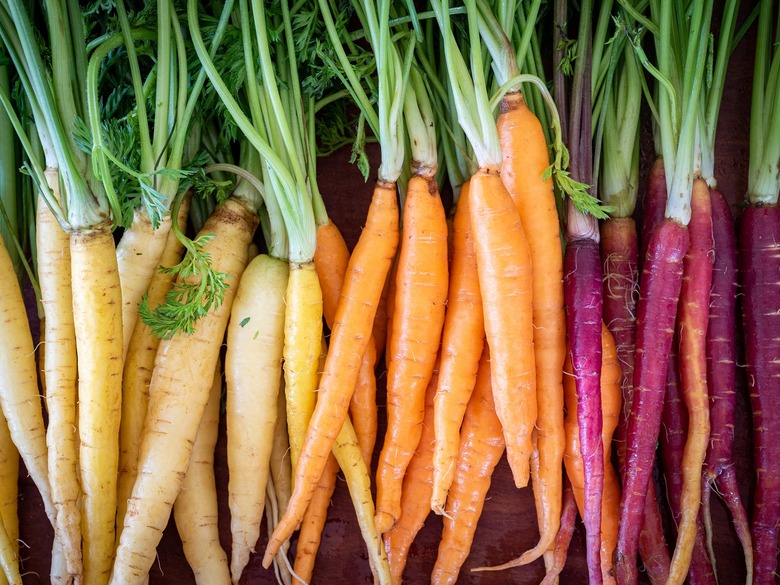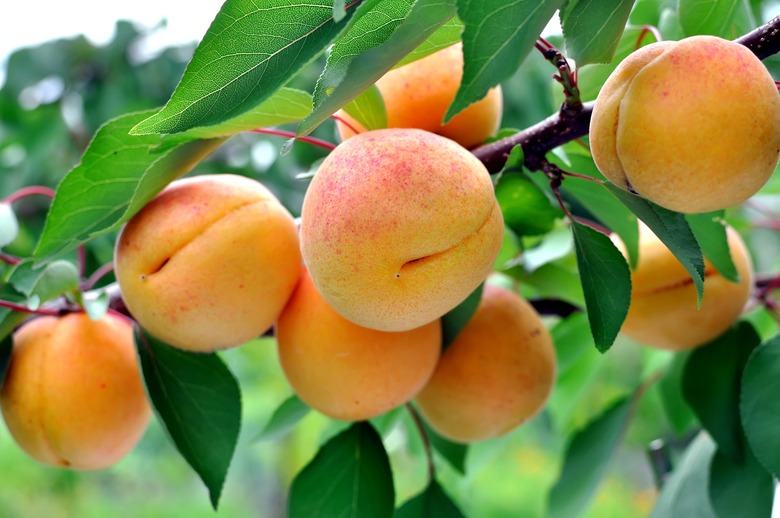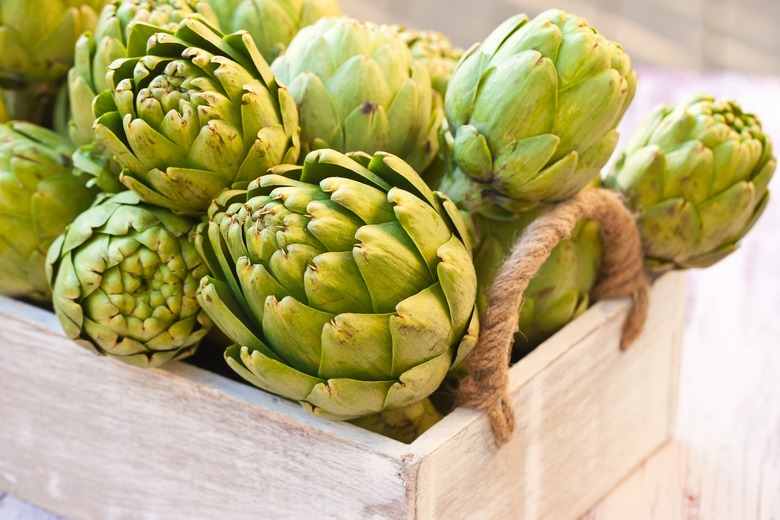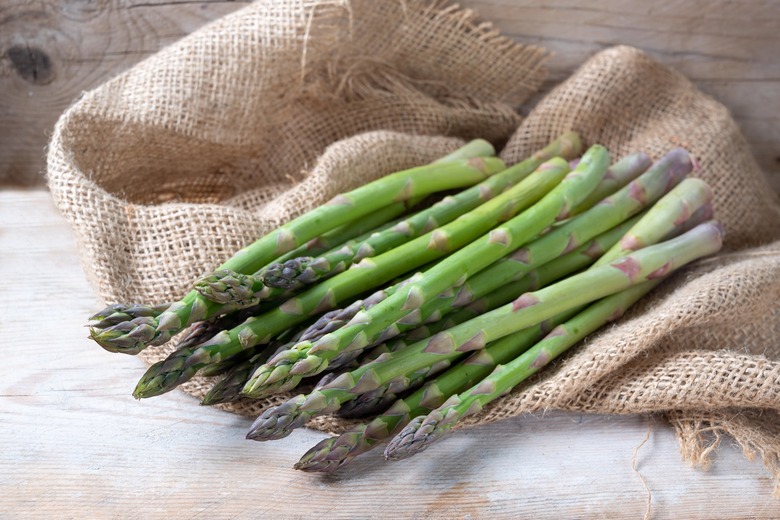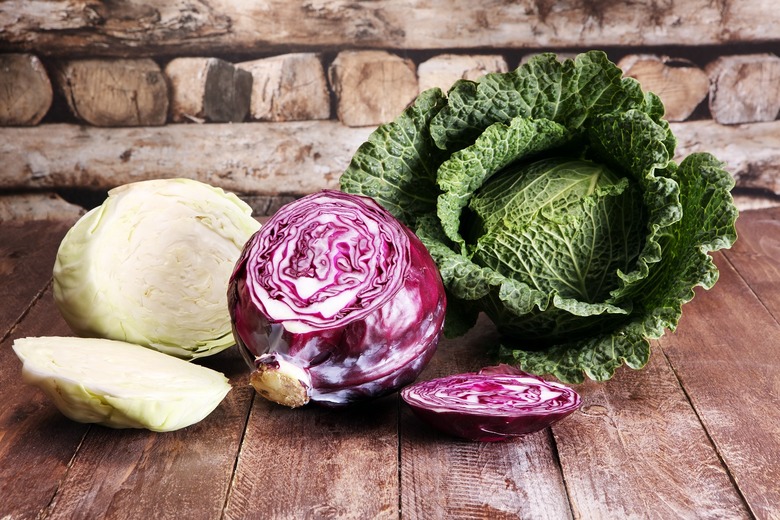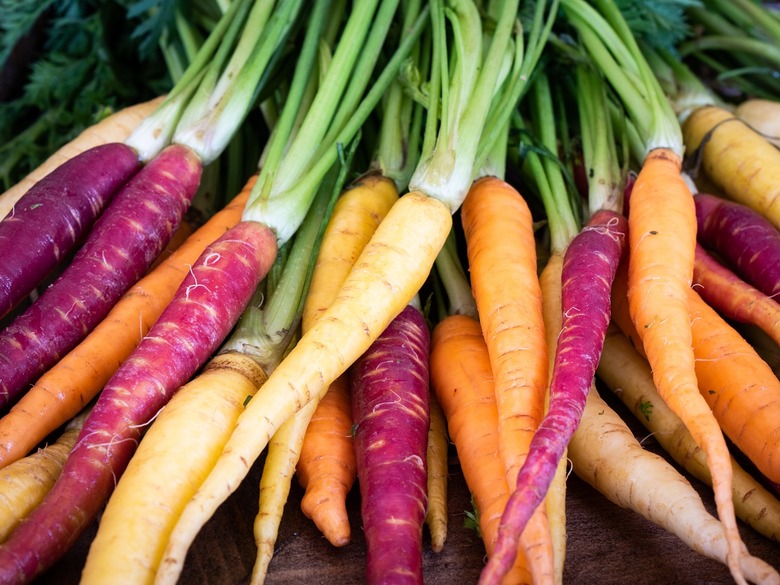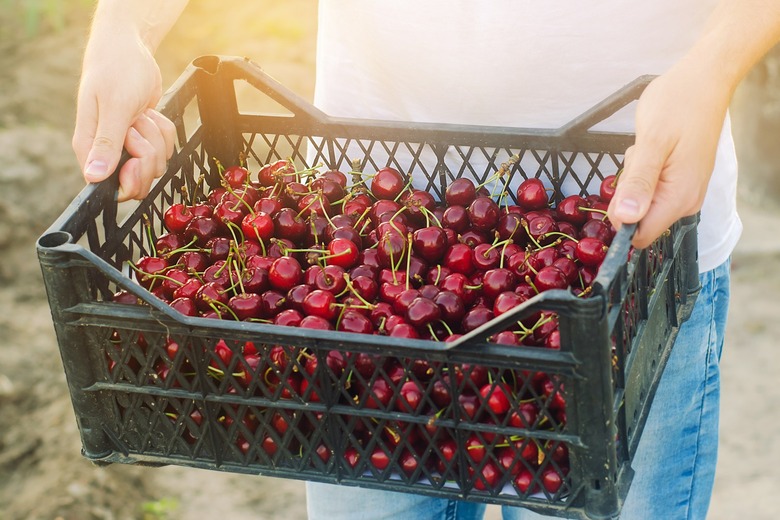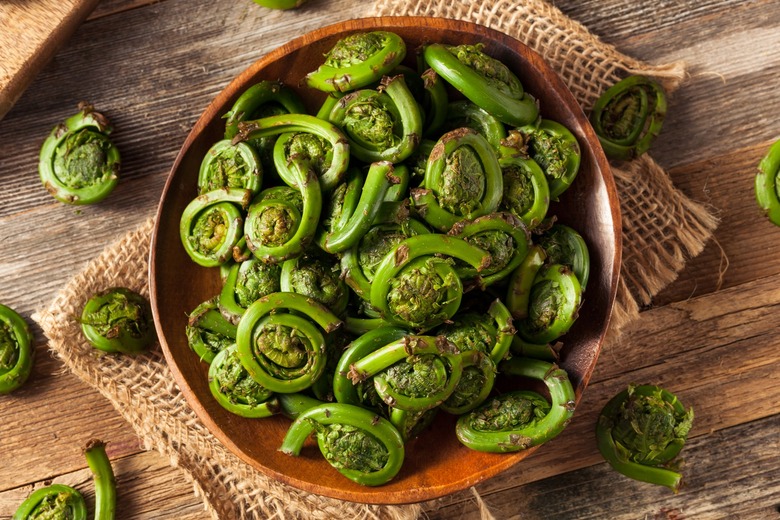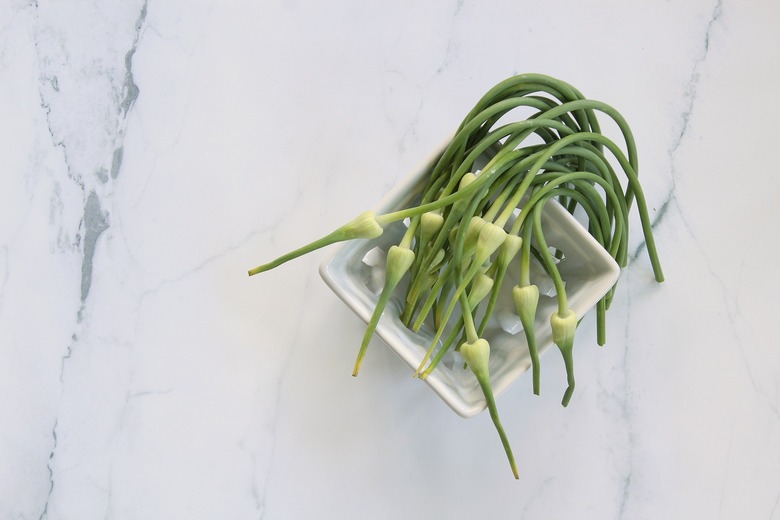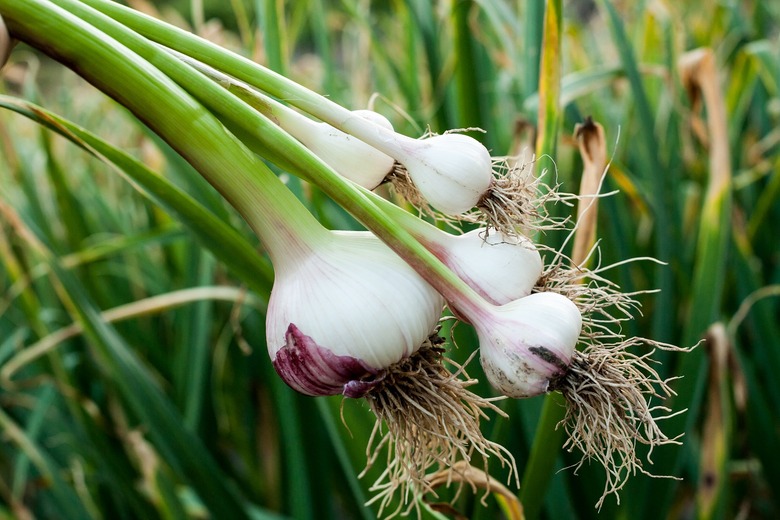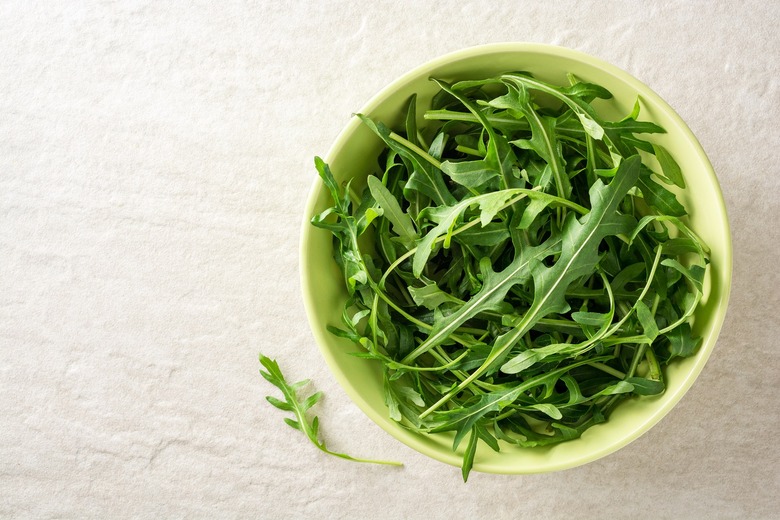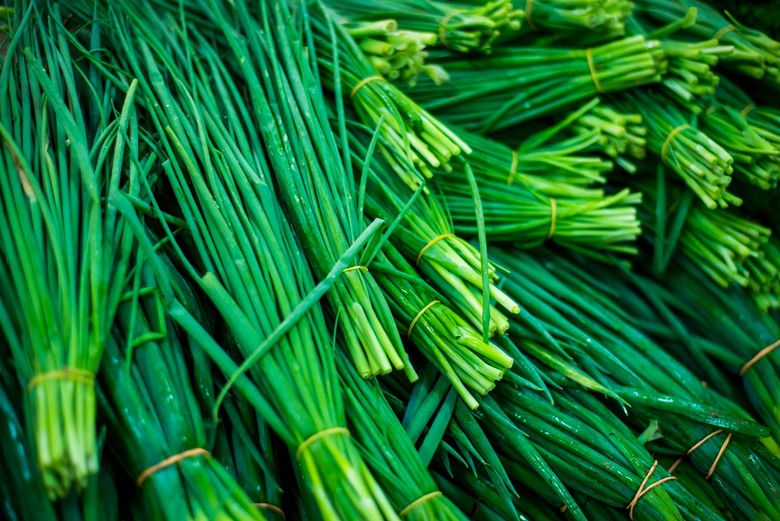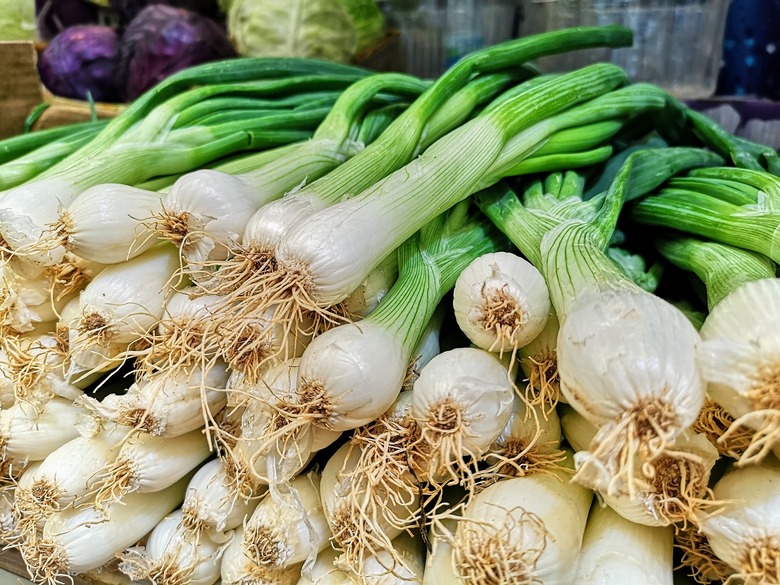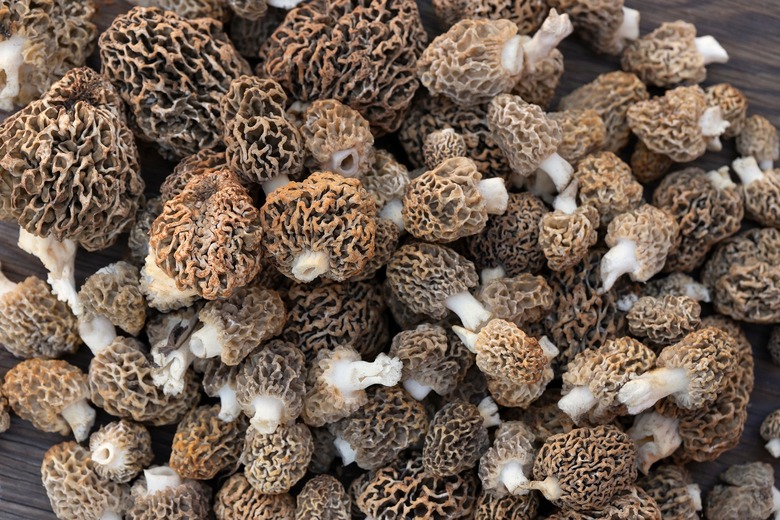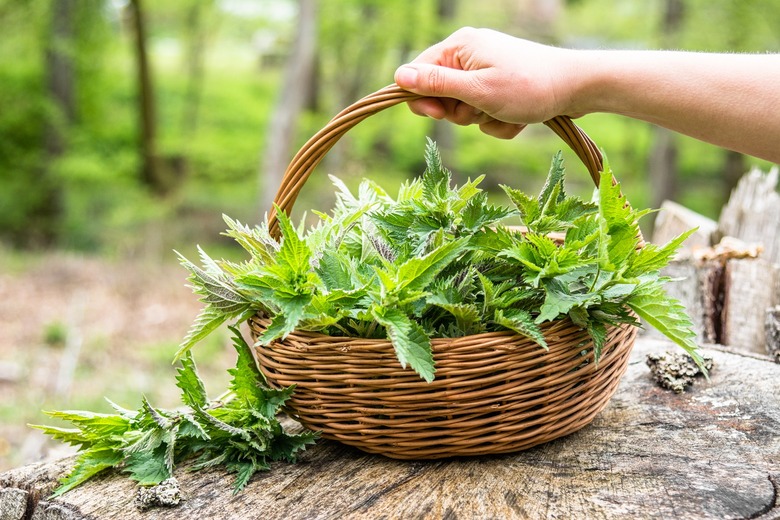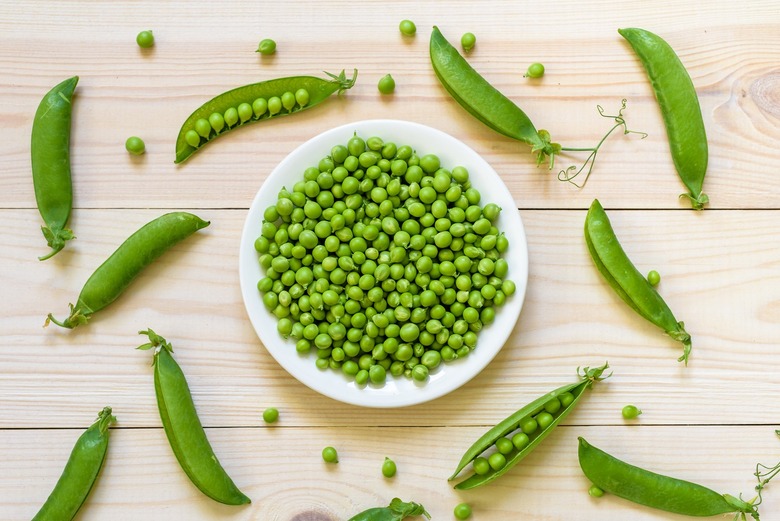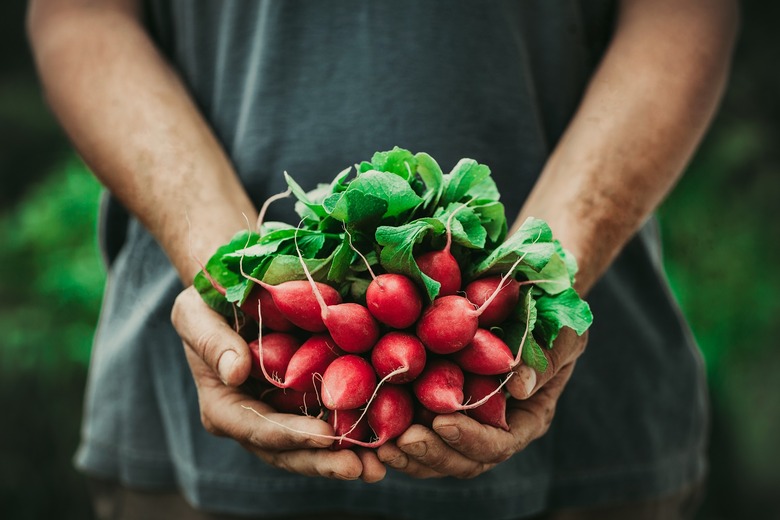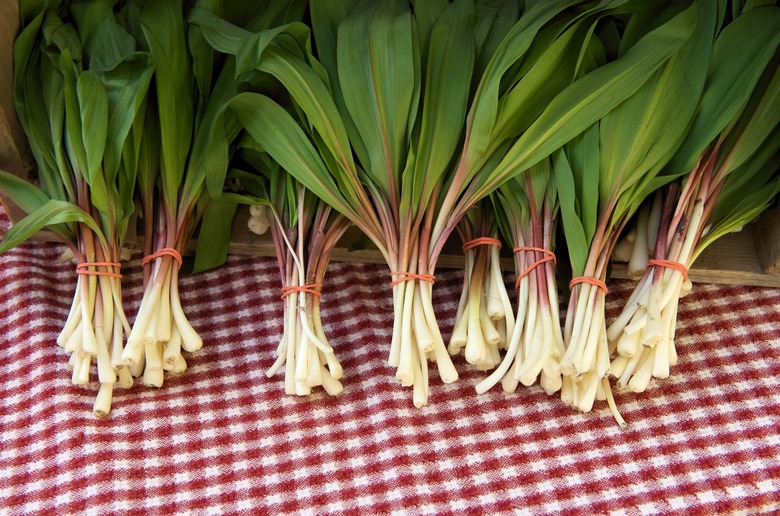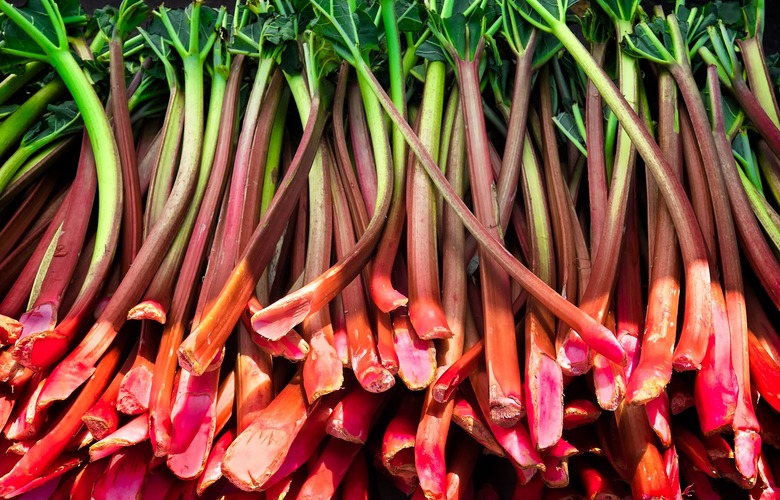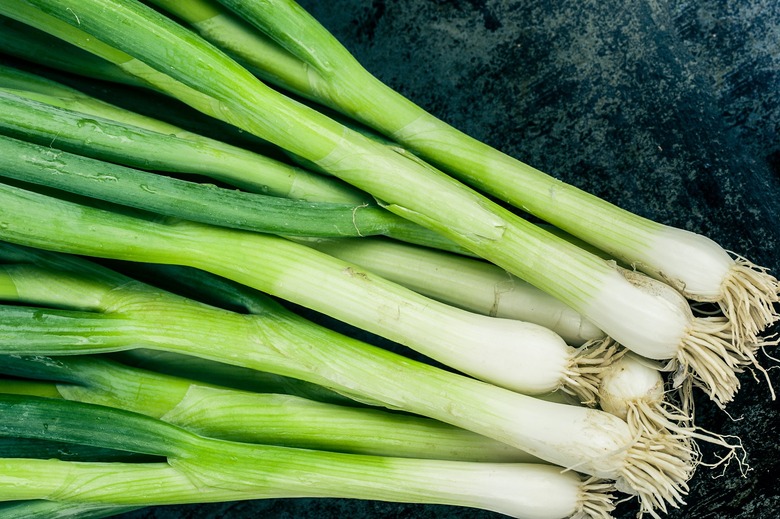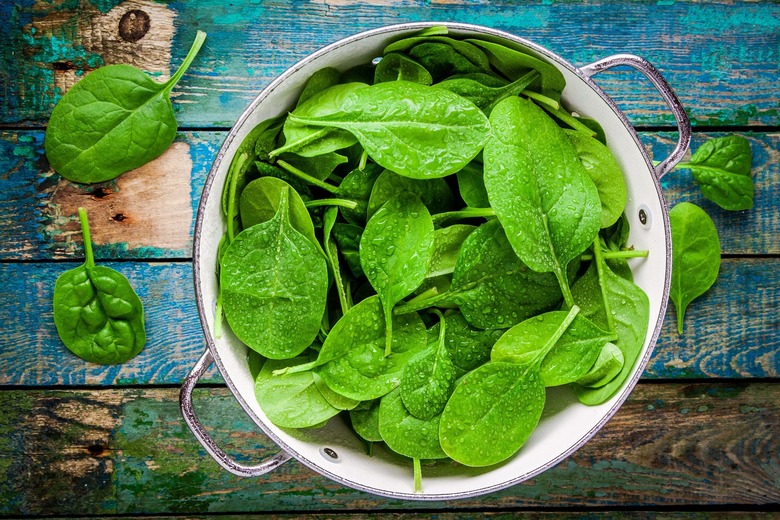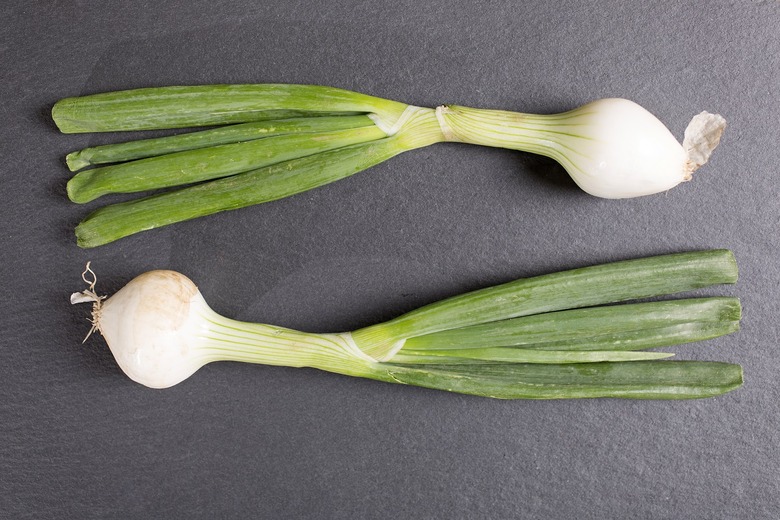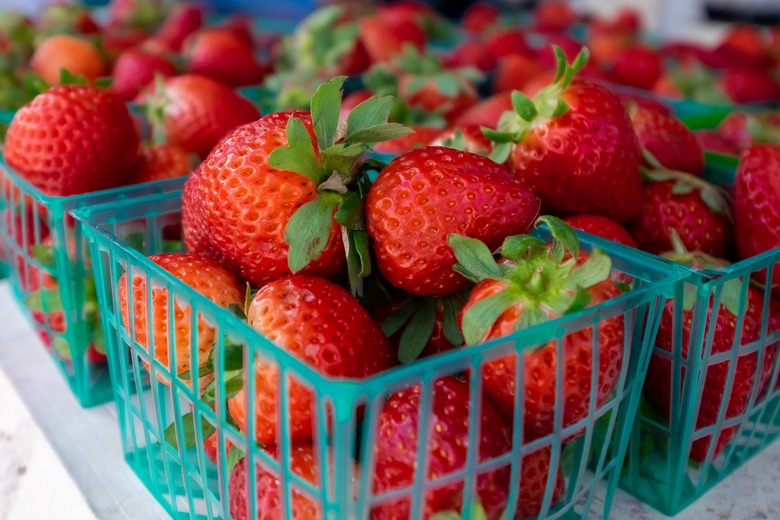What's In Season In Spring: Asparagus, Spinach, Peas And More
It's been a long, cold winter with hearty stew recipes and more potatoes and kale than we care to admit. But — what's that? Longer days? Warmer temperatures? Yes, spring has sprung, and we get a bounty of new vegetables, fruits and herbs in season to cook with.
What's in season in the U.S. in spring? From staples such as asparagus, spinach and rhubarb to specialty produce like morels, stinging nettles and fiddleheads, here's what to look for at your local store or farmers market — and how to cook it all.
Apricots
Apricots are in season beginning in May and stay in season until the end of summer, so you'll be able to enjoy them through the hottest days of the year. This sticky, sweet fruit works well with hearty meats, so consider using it as a glaze for your chicken or embrace its sugary properties by baking some apricot cookies.
Artichokes
March through May is artichoke time. Though frequently used in its canned form as a base for spinach and artichoke dip, this Mediterranean vegetable is good enough to stand on its own. Embrace the artichoke by seasoning it simply and tossing it on the grill this spring. Or, you can turn it into a snack food by preparing some fried artichoke hearts.
Asparagus
Asparagus sprouts in early spring and is one of the first signs of the new season. It's a great green staple, and it's affordable and abundant in the springtime. Embrace all things asparagus by using it in frittatas, adding it to fresh springtime salads or marinating it to serve alongside some grilled chicken or a perfectly-seared steak.
Cabbage
Corned beef and cabbage is an integral part of St. Patrick's Day celebrations in March, but there's so much more you can do with cabbage. Cabbage is best in the late fall to early spring, so get the last use of all that cabbage this spring by making cabbage rolls, cabbage stir fry or fried cabbage.
Carrots
Carrots do well in cool weather, making them a great spring vegetable (though they're also available in summer and fall). The bright colors of carrots, which can range from orange to yellow to purple and beyond, are certainly appealing. Think beyond dipping raw carrots in ranch dressing and use this veggie for carrot souffle, carrot soup or roasted carrots.
Cherries
Cherries may have a reputation for being a summer fruit, but their harvest technically starts in late spring. Let these small stone fruits shine in some of the best-ever cherry desserts; just make sure you know how to pit them easily first!
Fava Beans
Also known as broad beans, fava beans have a short season in the spring, so make sure you hit up the farmers market come May. They'll likely still be in their pods, but once you get the fava beans out, you'll find they have a buttery, nutty taste — perfect and light for spring. After shelling the beans, you can eat them steamed, boiled, mashed, raw, grilled or really any way you prefer. We like to blanch the beans, turn them into a purée and serve on a crostini. This recipe will make you forget all about avocado toast.
Fiddleheads
You can find fiddleheads, sometimes called fiddlehead ferns, at farmers markets in the spring, from late April to early June. It's a short season, so if you see these, snatch them up. They taste a bit like asparagus, with a hint of spinach and nuttiness. Highlight them by blanching them and sauteing them simply with pine nuts, garlic, lemon and Pecorino.
Garlic Scapes
Garlic root is the part of this allium most of us know well, but garlic scapes are just as edible — and just as delicious. Harvested in the spring, these flowering stems of the bulb have a grassy garlic flavor that is less potent than cloves when raw and sweeter when cooked. They make a simple and spectacular base for a garlic scape pesto.
Green Garlic
Also known as young garlic or spring garlic, green garlic is when a garlic plant is picked very young and has yet to fully form a bulb. It's picked by farmers to promote further growth in other garlic plants. Much like scapes, green garlic is milder and sweeter than fully-matured garlic. It can be used much in the same way as your normal garlic, but if you want to highlight it, use green garlic in a dressing or springtime pesto.
Greens
Kale salads are great for winter, but in the spring, embrace greens like arugula, dandelion greens, pea shoots and watercress, which bloom into season. These peppery greens make great bases for any side salad along with other springtime veggies and a bright herb vinaigrette.
Herbs
Speaking of herbs, fresh green ingredients like chives, parsley and dill come to life when the weather gets a bit warmer. Use them to make a gorgeous green goddess dressing for your salads, a flavor-packed herby omelet or add them to the top of a loaded baked potato.
Leeks
Leeks compliment hearty ingredients well, so if you're still feeling a bit wintry in the spring, use them as a component in silky potato leek soup. If you want to highlight the lightness of leeks, sautee them with some mushrooms and serve over gnocchi or another pasta. You can also use them as a prime ingredient in a frittata or omelet.
Morels
Morels are a bit of an elusive mushroom, they must be foraged from their natural habitats and can only be found between March and June. If you spot morels at the farmers market or anywhere and you're a fan of mushrooms, you'll be a happy camper. Morels are nutty, meaty and should be cooked simply, like as a topping for a luxurious mushroom risotto.
Nettles
Springtime means foraging time, and we urge you not to forgo nettles just because they are prickly and can literally sting you if you're not careful. Though these may burn when raw, after being cooked, nettles make an earthy, tangy, nutritious addition to a number of recipes. We like to highlight them by cooking them in a homemade gnudi.
Peas
Spring is the best time to purchase fresh peas when you're tired of eating the frozen variety. Toss peas in your salad, simply boil them and serve with a touch of butter or incorporate them in curries, soups or pot pies.
Radishes
Radishes are crisp, colorful and crunchy and just slightly peppery, making them a great addition to any springtime salad or poke bowl. You can also give radishes a quick pickle in a few tablespoons of red wine vinegar, a splash of olive oil, salt and pepper and serve them on top of carnitas tacos. For an extra pretty presentation, seek out watermelon radishes, which are white on the outside but hot pink inside.
Ramps
Ramps may look like scallions with broad leaves and a purple stem, but this wild onion tastes somewhere between onion and garlic — a hybrid flavor that's highly sought after during ramps' short spring season. You can use ramps in the same way you'd use scallions or leeks; they lend themselves well to egg dishes, potato sides and in salads. If you're looking for a way to go all-in on ramps, this easy ramp pesto recipe over pasta is the way to go; plus you can make extra and freeze it so you can extend your ramp-enjoyment season.
Rhubarb
You'll be able to snag the freshest rhubarb at the farmers market this time of year, and not many things scream springtime quite like fresh rhubarb made into an iconic pie. So transform its tart stalks into a strawberry rhubarb hand pie or a rhubarb crisp.
Scallions
A light, crisp onion, scallions are frequently used to complement Asian-inspired takeout dishes, so use them to top your homemade egg drop soup or grill them on a skewer with some yakitori meatballs. Scallions also work well in Korean marinades or in fried rice. Not feeling Asian food? Scallions are also a key topping to some of our all-time favorite casseroles.
Spinach
If you're missing important vitamins like iron and magnesium from your diet, spring is the perfect time to add spinach to your routine. Of course, you can use spinach as a base for your salads or cook it up homestyle by turning it into creamed spinach. Honestly, the uses for spinach seem endless. It's great with eggs, in lasagna or in curries.
Spring Onions
Spring onions may look a heck of a lot like scallions, but they are very much their own thing. You can tell the difference by the bigger bulb at the base of spring onions. Flavor-wise, these are sweeter and slightly less strong than regular onions, though they have a more potent flavor than scallions, especially in the greens. If you find these at your farmers market, get to know them well by grilling them and serving with a spicy romesco sauce.
Strawberries
Strawberries are on grocery store shelves year round, but they're at their sweetest from spring until the end of summer. Enjoy the fresh fruit in banana bread, on a salad or just by themselves. If you have an excess of strawberries, you can also use them to make jam, as a syrup for homemade strawberry shortcakes or in a refreshing salsa.
More from The Daily Meal:
Most Popular Vegetable by State
How to Use Food Scraps to Make Delicious Meals
Vegan Recipes That Will Make You Want to Go Plant-based
